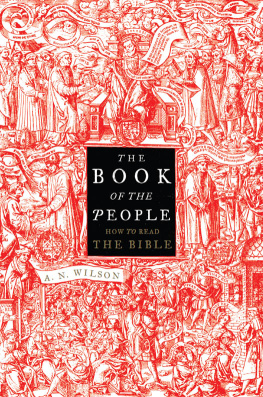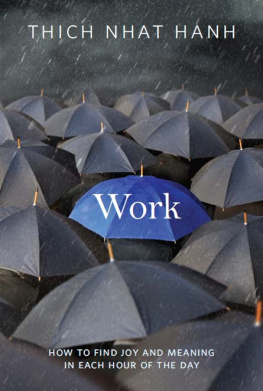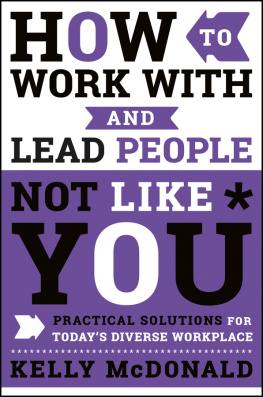Wilson - Project Bloom: A Yogis Wisdom for the Workplace
Here you can read online Wilson - Project Bloom: A Yogis Wisdom for the Workplace full text of the book (entire story) in english for free. Download pdf and epub, get meaning, cover and reviews about this ebook. year: 2012, publisher: BookBaby, genre: Religion. Description of the work, (preface) as well as reviews are available. Best literature library LitArk.com created for fans of good reading and offers a wide selection of genres:
Romance novel
Science fiction
Adventure
Detective
Science
History
Home and family
Prose
Art
Politics
Computer
Non-fiction
Religion
Business
Children
Humor
Choose a favorite category and find really read worthwhile books. Enjoy immersion in the world of imagination, feel the emotions of the characters or learn something new for yourself, make an fascinating discovery.
Project Bloom: A Yogis Wisdom for the Workplace: summary, description and annotation
We offer to read an annotation, description, summary or preface (depends on what the author of the book "Project Bloom: A Yogis Wisdom for the Workplace" wrote himself). If you haven't found the necessary information about the book — write in the comments, we will try to find it.
Project Bloom: A Yogis Wisdom for the Workplace — read online for free the complete book (whole text) full work
Below is the text of the book, divided by pages. System saving the place of the last page read, allows you to conveniently read the book "Project Bloom: A Yogis Wisdom for the Workplace" online for free, without having to search again every time where you left off. Put a bookmark, and you can go to the page where you finished reading at any time.
Font size:
Interval:
Bookmark:

 www.Equinoxonepublishing.com ISBN-13: 978-0615638072 (Equinox One Publishing) ISBN-10: 0615638074 ISBN: 9781620959800
www.Equinoxonepublishing.com ISBN-13: 978-0615638072 (Equinox One Publishing) ISBN-10: 0615638074 ISBN: 9781620959800 Contents


Before Meets After
Not too long ago, a day-trader who had traded himself into bankruptcy went into the offices of the day-trading firm and killed nine people and wounded twelve. I have often wondered how someone could get his life and work tangled into such a mess that he would turn to this kind of violence as a way to solve his problems. Maybe he was bullied and harassed by his coworkers to the point that he couldnt take it anymore. Perhaps he had been fired unjustly, so he sought revenge on a former boss. Maybe he was passed over for a raise or promotion, or been demoted or disciplined in some way that felt unfair. Whatever the reason, I could only imagine the killer felt that he was the victim, and violence was the only way to settle the score.
The killings at the day-trading firm happened not too far from my office. After the shooting, the killer fled the scene, and no one was quite sure where he was going next. The security guards in my building received word of the shooting and decided to secure our building to keep anyone from entering or leaving.
Sitting at my desk that afternoon in my office in the human resources department, I came up with another theory about workplace violence. Maybe sometimes its the little things that cause these incidents: stress, deadlines, disrespect, turf wars, and corporate backstabbing. Throw these ingredients into the pressure cooker, and a simple, single negative comment could be the last straw that causes a steaming, violent eruption. Of course, there is no justification for violence, but what it really comes down to is that someone didnt get what he wanted.
Lets face it, everyone gets angry. Most of the time, we do a good job of suppressing that little monster that always wants its way. But admit it. There are times when you harbor negative thoughts toward your boss, a family member, neighbor, or a rude motorist on the highway. Most of the time, we grit our teeth and dont take action, but the thoughts are there nonetheless.
I used to have feelings like this from time to time. Frustrating things would happen in my life that caused me to react rather than take time to respond. As this occurred day after day, anger would build up inside me, and I would end up taking it out on some innocent third party such as my wife. I never got to the point that I grabbed a gun and went after my coworkers like the guy at the day-trading firm, but I was still an emotional accident waiting to happen.
What probably saved everyone from suffering my emotional wrath is that I learned to meditate. Once I learned a simple practice that I could do by myself every day, my anger subsided and my emotions were once again under my control. My life was transformed in the process, and I was amazed at how it changed my life. My meditation practice not only improved my personal life, it also became an essential business tool that boosted my career.
One example of how meditation changed my work-life is reflected in the name of this book, Project Bloom. The afternoon the day-trader went mad and our building was locked down was also the magical beginning for Project Bloom. I stayed late that evening to avoid the traffic and wrote a proposal for a unique diversity program with a goal of improving the wellbeing of the people who worked in my department.
If you had worked in our office with me before Project Bloom, you wouldnt recognize the place afterward. Before, we didnt socialize much with each other. Each person just did his or her job and nothing extra. We didnt go out of our way to help each other, and there was a lot of resistance to change. The departments within human resources avoided interaction with the other departments as much as possible, didnt trust each other, and blamed each other when things went wrong, which made the word teamwork meaningless.
Project Bloom transformed our workplace. After we implemented Project Bloom, we worked together like a close-knit family. We cared about each other, we communicated better, we appreciated and recognized each other, and we took time to develop ourselves. I dont have statistics that show the impact Project Bloom had on productivity or employee retention, but I can tell you that after we implemented Project Bloom, our department was a great place to work, and everyone benefited.
The inspiration for Project Bloom was a direct result of my meditation practice. One day after finishing my meditation in my office, the idea for the program just popped into my mindalready fully formed and well-thought out. Interestingly, this is a phenomenon that is a common side effect of meditation. Ones innate, nonlogical intelligence begins to bloom, ones clarity of understanding improves dramatically, and the accuracy of ones decision-making skills increases.
The seed for Project Bloom was planted by the man who taught me how to meditate, Sadhguru Jaggi Vasudev. Sadhguru is a world-renowned yogi from India who is also the founder of Isha Foundation, a volunteer-run, international nonprofit organization dedicated to cultivating human potential. Sadhguru is based in southern India, but he teaches yoga and meditation classes around the world. He has offered programs at companies like Ford Motor Company and Microsoft to prisons filled with hardened criminals. If you look on Isha Foundations website at www.ishafoundation.org , you will see that Sadhguru is described as a visionary humanitarian and prominent spiritual leader who works tirelessly toward the physical, mental, and spiritual wellbeing of everyone. I can tell you from personal experience that every word of that is true. I have never met anyone so selfless, with so much compassion, who is completely dedicated to helping others bloom.
Named one of Indias fifty most influential people, Sadhguru has spoken at some of the worlds most prominent international leadership forums. He participated in numerous panels at the World Economic Forum and spoke on issues ranging from diplomacy and economic development to education and the environment. He has addressed the Tllberg Forum in Sweden, the Australian Leadership Retreat, and served as a delegate to the United Nations Millennium Peace Summit and the World Peace Congress.
I met Sadhguru when he visited my city and taught a yoga and meditation class. During the class, Sadhguru introduced the concept of inner management, the idea that people must first be able to manage themselves before they attempt to manage others. To me, this was an obvious truth that was often ignored in business. When I heard Sadhguru talk about inner management, I thought about its application in business, and I wanted to know how meditation could impact the workplace.
About six months after learning to meditate, I made arrangements to meet with Sadhguru the next time he visited the United States. When we met and began talking, I explained that I wanted to explore the impact of meditation in the workplace.
Next pageFont size:
Interval:
Bookmark:
Similar books «Project Bloom: A Yogis Wisdom for the Workplace»
Look at similar books to Project Bloom: A Yogis Wisdom for the Workplace. We have selected literature similar in name and meaning in the hope of providing readers with more options to find new, interesting, not yet read works.
Discussion, reviews of the book Project Bloom: A Yogis Wisdom for the Workplace and just readers' own opinions. Leave your comments, write what you think about the work, its meaning or the main characters. Specify what exactly you liked and what you didn't like, and why you think so.

















